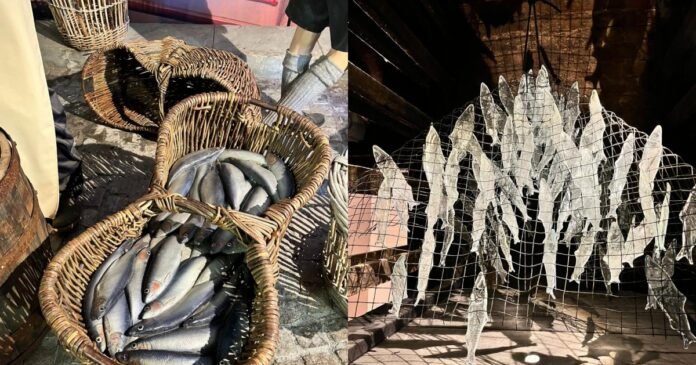The Castle is iconic for many reasons, including the siege of 1216, which ended partly because they had no water supply and had to dispose of their (ahem) waste.
Nature captured the Castle!
The Keep was built with limestone quarried in Caen, and the shipping from France cost more than three times the stone’s value.

Look throughout history, beneath the battles, dates and kings, and you will find stories about human needs for clean water and air, sanitation, good soil, thriving wild places and stable weather.
Look at any issue today, such as housing, disease, jobs, or migration, and you will see that what matters is a healthy and peaceful environment.
Many in the UK think we are safe from the impacts of destabilising Earth’s systems.
However, in this country, almost 2 million people’s homes are directly at risk from flooding.
More than 6 million people are at risk from extreme heat.
Polluted air in the UK is estimated to cause up to 36,000 extra deaths a year.
This is all set to worsen, and we will also be contending with food shortages, with global crops struggling due to drought, heat and storms.

You might be asking, “But what can I do?”
The first thing to know is that you are not alone.
A study of 13,000 people in 125 countries (published in Nature, April 2025) found that 89% want intensified political action for the climate.
This study showed that we assume other people care less than we do, so we keep quiet about our concerns.
A good place to start is by learning and talking with others.
We can learn a lot from history and our heritage buildings and landscapes, to inform better decisions for our planet’s future.
You can be inspired by a museum or historic site local to you and ask: “Is there an environmental story here?”
At Norwich Castle Museum, you can see dioramas and collections overseen by Ted Ellis, a pioneering Norfolk naturalist and a former curator of natural history.
He wrote daily nature notes for the EDP, became a TV broadcaster, and created the Wheatfen Nature Reserve.
At the Time and Tide Museum in Great Yarmouth, you can learn how herring stocks collapsed in the 1970s due to overfishing caused by powerful trawlers and a lack of regulation.
This museum is running a project called ‘When the Tide Comes’, inviting community stories about coastal erosion, which will increase with rising seas and storms in future.
At Gressenhall Farm and Workhouse, you can find out about agriculture and how changing the use of land affects biodiversity and the climate.
There is also the Gressenhall Environment Hub that offers training and school activities for future green skills.
At Cromer Museum, on the Deep History Coast, the Geology collection reveals stories of how the climate has changed over time.
Discover how these slow changes in the deep past compare to the rapid acceleration of heating due to burning fossil fuels and damaging carbon sinks.
It’s a sad irony that fossil fuels are contributing to a future in which it will be harder for us to discover, enjoy and protect fossils, and all the other things and places that we treasure.
You don’t need to visit a museum to see the history of environmental damage or restoration.

How do you remember it, and how has it changed since then?
How might it change in future?
This summer, our region will continue to be affected by drought, and perhaps the heat waves will break with heavy rainfall.
Whatever you can do, and if you are lucky enough to spend time with your loved ones or to get out and about, please share your concerns and discuss these issues.
This will lay the foundations for taking action together for a safer future.






